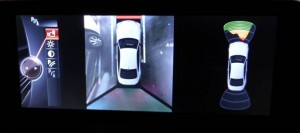
Reversing cameras are taking the difficulty out of manoeuvring, so why have reversing in the test?
In what is proposed to be one of the bigger shakeups in the driver licence process in the past two decades, the type of manoeuvres you will need to do and the knowledge you will need to have to pass the practical test is potentially about to change. Vehicle technology and the way we drive has changed over the years and there are proposals to remove some lesser-used items of the test and introduce others that are more common.
Around 1000 learners at 20 testing centres across Britain will be guinea pigs in a trial of a new format of practical exam next year.
For example, the three-point turn (also called the ‘turn in the road’) could be scrapped in favour of more time spent in independent driving following directions from a satellite navigation system (as opposed to needing to read road signs). The reverse around the corner move could be replaced by reversing out of a parking pay or pulling up on the left or right before rejoining the flow of traffic.
A Driver and Vehicle Standards Agency (DVSA) spokesman said: “We are carrying out initial research to explore how the driving test could better reflect real-life driving. Any future changes to the test would be subject to full public consultation.”
As we are privy to all of the questions in the question bank (you can try them yourself by choosing car or motorbike from the top menu), we know that the kinds of questions that are asked are a little out-of-date with vehicle technology, as is the practical test. We don’t think it’s necessary to know exactly how many metres it takes to stop at a certain speed when the two-second rule is far more memorable over a longer period of time. Many Approved Driving Instructors also disagree with there being first aid advice in the test, especially as some of the advice around CPR contradicts NHS’s advice.
For example, is it even worthwhile to make candidates perform an emergency stop now that we have ABS? When I took the test in 1991 it was in a manual Ford Escort in Boston, Lincolnshire and I remember having to do the three-point turn and reversing around a corner, but not the parallel park. Nowadays, many cars will parallel park for you, and if they don’t they come with reversing cameras and sensors that make it almost impossible (but not actually impossible if you are bad enough) to have an accident.
To save time, candidates might be asked some of the questions while they are driving, e.g. how to operate the rear window heater, as opposed to at the start of the test.
We think that anything that dumbs down driving is not a good idea, and this idea does seem to dumb it down. However, there will be ways of including these technologies in the exam without compromising the quality of the rest of the exam. The Driving Instructors Association has welcomed the plans to review the test, but the AA is not so keen on assuming everyone has access to technologies such as sat nav and automatic parallel parking.
